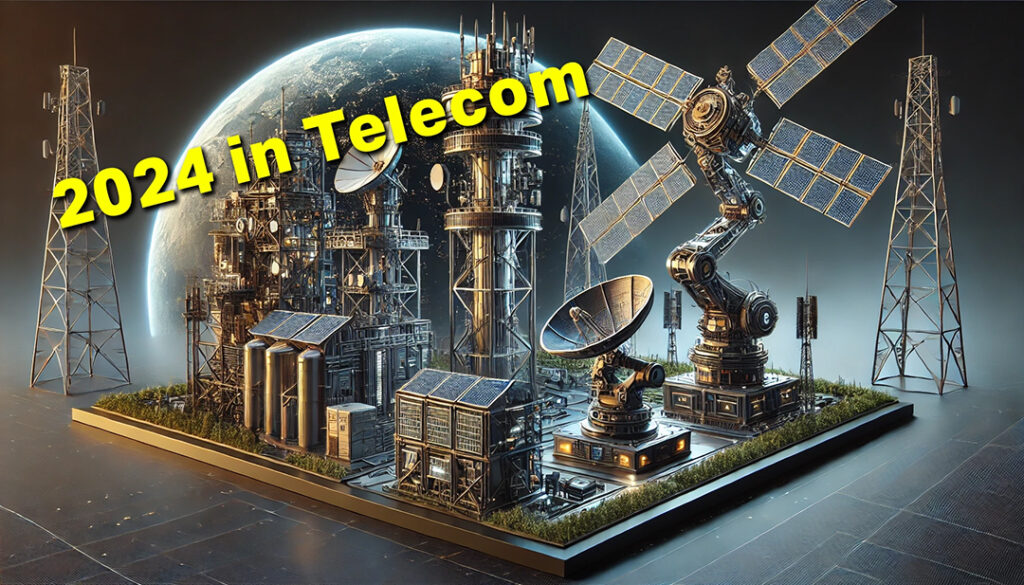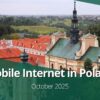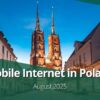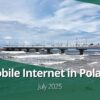
The end of 2024 is a perfect time to look back at the most important events in the telecommunications industry.
Over the past few months, we’ve seen a clear acceleration in 6G research, the increasing adoption of private 5G networks in industry, and growing interest in “green telecommunications” and network security. Let’s take a brief look at the key areas, based on official sources and real-world implementations.
Development of 5G and the Beginnings of 6G Deployment
5G networks have already shown their potential, enabling high-speed data transmission and low latency, as confirmed by GSMA reports and equipment manufacturers such as Nokia and Ericsson. Meanwhile, the race for 6G is already underway. In Finland, as part of the 6G Flagship project (carried out in collaboration with Nokia, among others), researchers are intensively exploring the possibilities of sixth-generation networks, with updates provided on Nokia’s official website and the 6G Flagship pages. Will 2025 be a year of dual challenges for operators’ infrastructure? Time will tell.
Private 5G and Industry 4.0
The industrial sector is increasingly opting for private 5G networks (Private 5G). A notable example from this year is the BMW factory, where high speeds and stable connectivity allow assembly robots to operate in perfect sync—information on this can be found on the automaker’s official site. For operators, this means an opportunity to develop by selling slices of spectrum and offering dedicated services exclusively for factories or corporate campuses. According to market analyses published in fall 2024, more and more companies are keen to partner with operators in such ventures, as it provides them with full control over their network ecosystem and a high level of data security.
Satellite Infrastructure and Internet Access
In 2024, it became evident that satellite networks perform exceptionally well in regions with weak terrestrial coverage. A prime example is Starlink by SpaceX, whose low Earth orbit (LEO) satellites deliver high-speed Internet to many corners of the globe. The official Starlink website offers up-to-date details on the constellation’s expansion and service coverage. Meanwhile, in New Zealand, the operator Spark has already tested integrating satellite services with its own infrastructure to ensure a backup connection in case its own systems fail.

Credits: U.S. Space Force photo by Joshua Conti, Public domain, via Wikimedia Commons
Implementing Cloud Solutions in Telecommunications
An increasing number of operators are moving their services to the cloud, especially those related to network traffic management or VoIP. A strong example is the collaboration between Telefónica and Google Cloud, aimed at providing advanced cloud tools to businesses in Latin America. A successful outcome here could certainly spark further partnerships, enabling operators to scale solutions more quickly and implement new customer features with ease. It’s definitely worth watching how this field evolves.
Security Issues
DDoS attacks and other cyber threats remain a serious challenge for operators. The National Cyber Security Centre (NCSC) in the UK regularly warns about the increasing scale and complexity of these attacks, and GSMA, in its reports, highlights the importance of network slicing and artificial intelligence for faster anomaly detection. For telecom companies, it all boils down to further investments in new security systems to protect both themselves and their customers.
Where the Real and Virtual Worlds Meet
Augmented Reality (AR) and Virtual Reality (VR) are beginning to make their way into operators’ offerings. NTT Docomo in Japan is involved in XR (extended reality) projects, which enable remote VR sports broadcasts and professional distance training, among other possibilities. Its English-language site provides insights into various initiatives that could soon gain traction in other countries. Next year will show whether we’re seeing the start of a major trend or just a minor addition to operators’ portfolios.
Sustainable Development
“Green telecommunications” is no longer just a marketing catchphrase—it’s a real response to the growing demand for clean energy. Operators are looking for alternative power sources for base stations. In northern Sweden, Ericsson successfully tested powering a base station with hydrogen fuel cells. News of the project spread in the summer of 2024, and implementing such a solution could serve as an excellent example of eco-friendly infrastructure for mobile networks in remote locations or extreme weather conditions.
Emergency Communications and Network Resilience
Reliable telecommunications infrastructure is not just about convenience; it’s a matter of safety. In crisis situations, this becomes paramount. Finding solutions to ensure secure and stable communication during emergencies is becoming a strategically important issue in more and more countries. In Canada, as reported by CBC, operators work closely with authorities by investing in warning systems and providing connectivity even in challenging weather conditions. These efforts are also reflected in information published by the Government of Canada, underscoring the importance of telecommunications in emergency situations. We’re likely to see even more international involvement in this area next year.
Over the course of 2024, the telecommunications industry has proven that it can respond dynamically to new challenges and carry out innovative projects. Operators are increasingly willing to collaborate with various partners—ranging from cloud providers to equipment manufacturers—in order to meet customer needs while keeping up with technological advancements.
On behalf of the entire RFBENCHMARK Editorial Team, we wish everyone that the upcoming year 2025 will bring even more groundbreaking ideas and further improvements in connectivity quality, so that each of us can enjoy true freedom of communication regardless of location or time.
RFBENCHMARK Editorial Team










Leave a Comment
Your email address will not be published. Required fields are marked with *